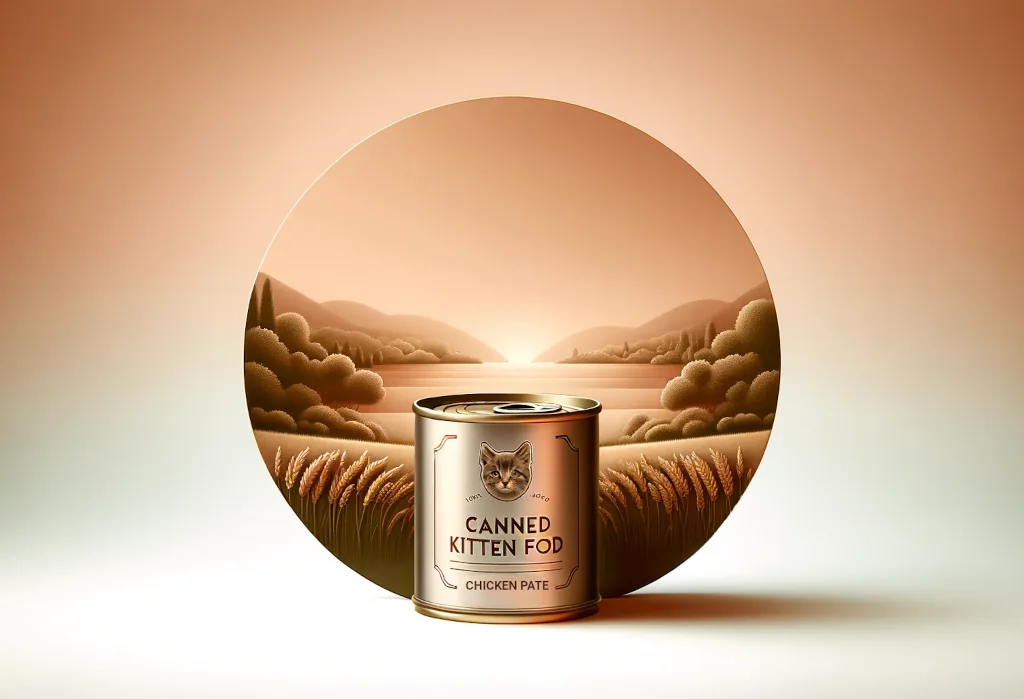Deciding what to feed your tiny, adorable furball can feel like choosing a wand at Ollivanders – a bewildering decision with potentially magical outcomes. After all, you want your little one to grow up healthy, happy, and possibly capable of performing some enchanting tricks of their own.
In this blog post, you’ll unlock the secrets to choosing the best canned kitten food, ensuring your kitten’s dietary needs are not just met but exceeded. Let the journey towards a thriving feline friend begin!
Key takeaways:
- Choose canned kitten food with named animal proteins as the first ingredient for quality growth support.
- Verify the AAFCO statement on labels for complete and balanced nutrition; consider the product’s texture to promote flexible eating habits.
- Avoid canned foods with meat by-products as the main ingredient and those containing artificial preservatives or colors.
Why Is Canned Food Essential for Kittens?
When it comes to nurturing your little feline friend, choosing the right diet is crucial. Canned kitten food not merely satisfies their taste buds but plays a pivotal role in their overall health and development. Let’s break down why incorporating canned food into your kitten’s diet isn’t just a good idea—it’s essential.
First off, canned food packs a hefty hydration punch. Kittens, like their adult counterparts, aren’t known for their high water consumption. Given their natural instinct to derive moisture from their prey, canned food mimics this, providing the hydration they might miss out on.
Moreover, these tiny carnivores are in a rapid growth phase, making the higher protein content in canned food ideal for their development. Unlike some dry foods, canned options are often richer in animal proteins and fats, which help fuel your kitten’s growth and energy levels.
So, not only does canned food help keep your kitten well-hydrated, but it also supports their developmental needs with the right balance of nutrients. It’s a winning combo for your growing kitten.
How Can You Understand Kitten Food Labels?
Diving into the world of kitten food labels can feel a tad overwhelming at first glance. But once you know what to look for, you’ll be reading them like a pro. Here’s your quick guide to deciphering those labels:
-
Look for the AAFCO Statement: The Association of American Feed Control Officials (AAFCO) sets standards for pet foods in the United States. A label that includes an AAFCO statement indicates the food provides complete and balanced nutrition for kittens.
-
Identify Key Ingredients: Ingredients are listed by weight. Look for named animal sources (like chicken or salmon) as the first ingredient. It’s a sign of a high-quality protein source vital for your kitten’s growth.
-
Nutrient Content: Check for essential nutrients such as taurine (an amino acid crucial for heart and eye health), as well as a healthy balance of vitamins, minerals, and fatty acids. These components are foundational for robust development.
One thing most guides miss? The texture! Kittens start with a preference for the texture they’re introduced to early on, and some might be finicky eaters if not exposed to different textures. Try offering various types of canned food (pâté, minced, chunks in gravy) early to foster a more flexible eater.
What Nutrients Are Vital for Your Kitten?
Ensuring your kitten gets all the essential nutrients from their diet is like laying the foundation for a sturdy, healthy life. Here are key nutrients to look out for in your kitty’s canned food:
-
Protein: This is the cornerstone of a kitten’s diet; it supports growth and helps with tissue repair. Look for high-quality animal-based proteins as the first ingredient.
-
Fatty Acids: Omega-3 and Omega-6 fatty acids are vital for brain development, skin health, and a glossy coat.
-
Vitamins and Minerals: These support overall health, bolstering the immune system and ensuring proper development. Calcium and phosphorus, for example, are important for strong bones and teeth.
-
Taurine: An amino acid that’s essential for heart health and good vision. Cats can’t produce enough taurine on their own, so it must come from their diet.
A top tip that’s often overlooked? Rotate your kitten’s diet within the realm of suitable options. This not only keeps mealtime interesting for your kitten but can also prevent dietary deficiencies and reduce the risk of developing allergies. Plus, it’s a great way to introduce them to different textures and flavors, ensuring they grow into adaptable eaters.
Remember, every kitten is unique, and their dietary needs can differ based on their growth rate, activity level, and health. Always consult with your vet to tailor their diet to their specific needs. And there you have it—a primer on how to navigate the canned kitten food aisle like a seasoned pro!
How Do You Choose Between Wet, Dry, and Hybrid Diets?
Deciding on the right type of diet for your kitten can feel like tiptoeing through a nutritional minefield. Let’s break it down to make that decision process a tad easier, shall we?
Wet Diets (Canned Food): Crammed with moisture, wet food mimics a more natural diet for your furball. It’s fantastic for keeping them hydrated, especially for those tiny troublemakers who treat their water bowl with suspicion. The higher meat content also provides a good protein punch, crucial for those rapid growth spurts. However, it can be pricier and might not be as convenient as dry food in terms of storage and feeding schedules.
Dry Diets: The crunch of kibble helps keep your kitten’s teeth clean, reducing the risk of dental issues down the line. It’s also a wallet-friendly option and convenient to store and serve. On the flip side, it’s often lower in meat protein and moisture, which could lead to dehydration if your kitty isn’t a keen water-drinker.
Hybrid Diets: Got a picky eater or looking for the best of both worlds? A hybrid diet combines the convenience of dry food with the meaty moisture of wet food. You can serve them separately or mix them together. This way, your kitten gets the hydration and protein it needs while also enjoying a variety of textures.
What Are the Warning Signs of Poor-Quality Kitten Food?
Not all canned kitten foods are created equal. Here’s how to spot the “no-go’s” before they make it into your shopping cart:
- Meat By-products as the First Ingredient: Quality is king, and the first ingredient listed should always be a named meat source (like chicken or salmon), not a vague by-product. By-products can be a part of a balanced diet but shouldn’t take center stage.
- Ambiguous Protein Sources: “Meat” is a broad term. Good labels specify the type, such as ‘turkey meal’ or ‘beef liver’. Mystery meat’s a no-no.
- Artificial Preservatives and Colors: These chemical additives have no place in your kitten’s bowl. Look for foods preserved with natural alternatives like Vitamin E (mixed tocopherols) and avoid anything with artificial colors or flavors. Kittens couldn’t care less about the color of their food, after all.
- Lack of Taurine: This essential amino acid is crucial for heart and eye health. All high-quality kitten foods should contain it, yet some budget options might skimp on this vital nutrient.
A Pro Tip That’s Often Overlooked:
Check the Calcium to Phosphorus Ratio. This might seem like splitting hairs, but it’s vital for proper bone growth and development. The ideal range is about 1.0 to 1.2 parts calcium to 1 part phosphorus. High-quality kitten food brands usually provide this information on their website or customer service line.
Choosing the best canned kitten food isn’t just about satisfying picky palates; it’s about laying a foundation for a lifetime of health and happiness. So, take your time, read those labels, and remember, you’re not just feeding a kitten; you’re fueling a future feline marvel.
Alex, a passionate animal lover, has experience in training and understanding animal behavior. As a proud pet parent to two dogs and three cats, he founded AnimalReport.net to share insights from animal experts and expand his knowledge of the animal kingdom.





